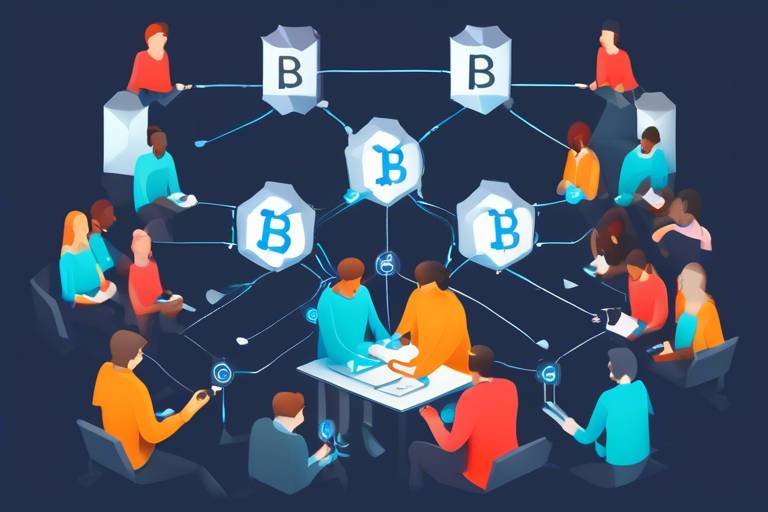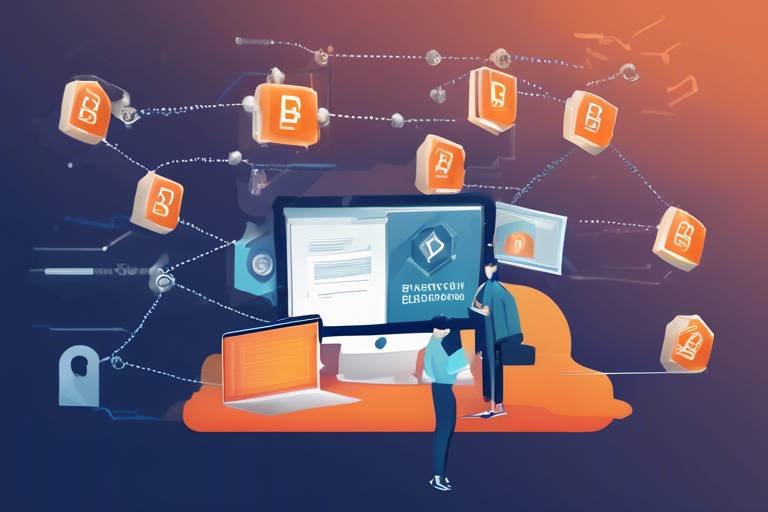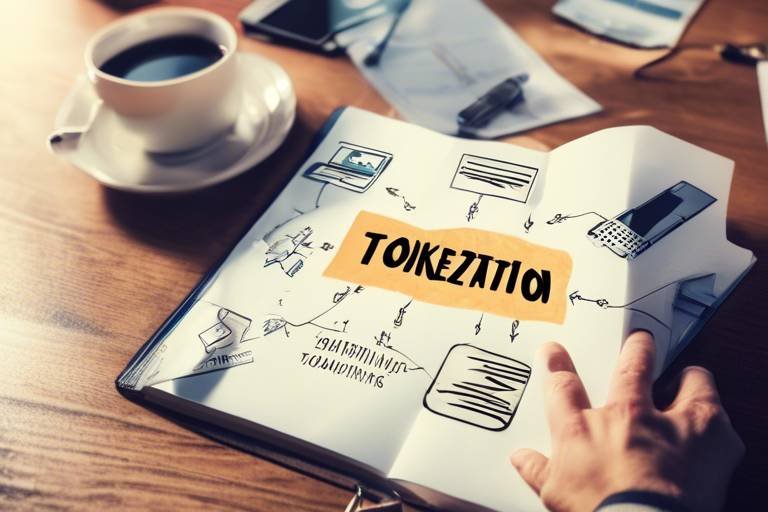The Role of Blockchain in Fostering Collaboration in Research
In today's rapidly evolving research landscape, collaboration is more important than ever. Researchers from various disciplines are increasingly working together to tackle complex problems, share insights, and drive innovation. However, traditional methods of collaboration often fall short when it comes to ensuring transparency, security, and efficiency. This is where blockchain technology steps in, offering a revolutionary approach to how researchers share data and collaborate across borders and disciplines. By providing a decentralized and immutable digital ledger, blockchain enhances trust and integrity in collaborative efforts. In this article, we will delve into the multifaceted ways blockchain is transforming research collaboration, exploring its principles, benefits, and future potential.
At its core, blockchain is a decentralized digital ledger that records transactions across multiple computers. Unlike traditional databases, which are controlled by a central authority, blockchain operates on a peer-to-peer network where each participant has access to the entire database. This decentralized nature ensures that no single entity can alter the data without the consensus of the network, thereby enhancing data integrity and security. Imagine a library where every book is a record of a transaction. Instead of a librarian being the only one who can write or erase information, each reader has a copy of every book, ensuring that once a book is written, it can never be changed without everyone knowing. This is the essence of blockchain technology.
Data integrity is paramount in research, where even the slightest alteration can lead to significant consequences. Blockchain ensures that once data is entered, it remains unaltered and verifiable. Each transaction is time-stamped and linked to the previous one, creating a chain of records that is nearly impossible to tamper with. This fosters trust among researchers and stakeholders, as they can be confident that the data they are working with is accurate and reliable. In collaborative projects, where multiple parties contribute data, this level of trust is essential. As an analogy, think of blockchain as a digital fingerprint for data; it uniquely identifies and verifies the authenticity of each piece of information, ensuring that nothing is lost or manipulated.
Secure data sharing is crucial for collaboration, especially when sensitive information is involved. Blockchain technology allows researchers to share data securely while maintaining privacy and compliance with regulations. By using cryptographic techniques, data can be encrypted and shared only with authorized individuals, ensuring that sensitive information remains confidential. Furthermore, blockchain's transparency allows researchers to track who accessed the data and when, providing an additional layer of security. This is particularly relevant in fields such as healthcare and finance, where data breaches can have dire consequences. With blockchain, researchers can confidently share their findings without the fear of unauthorized access or data leaks.
One of the most exciting applications of blockchain in research is the use of smart contracts. These self-executing contracts automate agreements between parties, streamlining processes and reducing administrative burdens. For instance, a research team can set up a smart contract that automatically distributes funding to collaborators based on predetermined milestones. This not only saves time but also ensures that all parties are held accountable for their contributions. Imagine a vending machine: you insert your money, make a selection, and the machine automatically delivers your snack. Smart contracts operate in a similar way, executing transactions and agreements without the need for intermediaries.
Tokenization is another innovative aspect of blockchain that can incentivize researchers to collaborate. By rewarding contributions with tokens, researchers are motivated to engage in collaborative projects actively. These tokens can represent various forms of value, such as access to resources, funding, or even recognition within the research community. This creates a vibrant ecosystem where collaboration is not only encouraged but also rewarded. Think of it like a loyalty program; the more you contribute, the more rewards you earn, fostering a sense of community and shared purpose among researchers.
Real-world examples of blockchain's impact on research collaboration provide compelling evidence of its potential. For instance, the Ocean Protocol enables data sharing while maintaining privacy and control, allowing researchers to access valuable datasets without compromising sensitive information. Another example is the ResearchHub, which uses blockchain to create a marketplace for research contributions, rewarding researchers for sharing their work. These case studies showcase the tangible benefits realized by research teams using blockchain technology, highlighting its ability to enhance collaboration and drive innovation.
Despite its potential, blockchain is not without challenges in research environments. Issues such as scalability, interoperability, and the need for standardization can hinder its widespread adoption. Additionally, the learning curve associated with blockchain technology may pose obstacles for researchers unfamiliar with its principles. It’s crucial to address these challenges to fully harness the power of blockchain in collaborative research efforts. After all, even the most promising technology can face hurdles on the road to implementation.
Looking ahead, emerging trends in blockchain technology promise to further enhance research collaboration. Innovations such as decentralized autonomous organizations (DAOs) could revolutionize how research teams are structured and funded, allowing for more democratic decision-making processes. As blockchain continues to evolve, its potential applications in various disciplines—from climate science to social research—will likely expand, paving the way for more inclusive and collaborative research environments.
In conclusion, blockchain holds significant promise for transforming research collaboration. By enhancing data integrity, facilitating secure data sharing, and incentivizing participation, it addresses many of the challenges faced by researchers today. As we embrace innovative technologies like blockchain, the future of collaborative research looks brighter than ever. Researchers can look forward to a more transparent, efficient, and rewarding collaborative landscape that empowers them to make groundbreaking discoveries together.
- What is blockchain technology? Blockchain is a decentralized digital ledger that records transactions across multiple computers, ensuring data integrity and security.
- How does blockchain enhance collaboration in research? It provides transparency, security, and efficiency, allowing researchers to share data confidently and work together more effectively.
- What are smart contracts? Smart contracts are self-executing agreements that automate processes between parties, reducing administrative burdens in research collaboration.
- Can blockchain ensure data privacy? Yes, blockchain allows for secure data sharing while maintaining privacy through encryption and access controls.
- What are the challenges of implementing blockchain in research? Challenges include scalability, interoperability, and the need for standardization, as well as a learning curve for those unfamiliar with the technology.
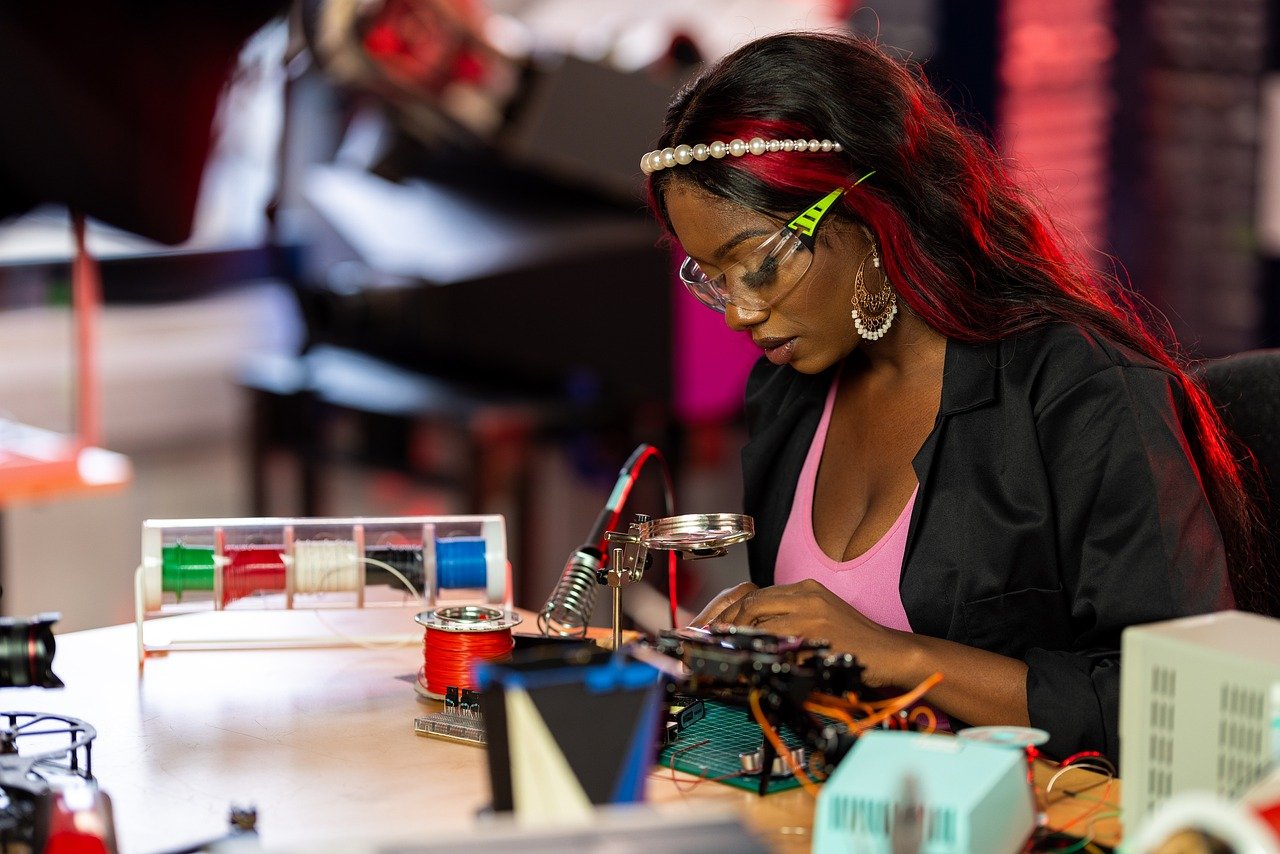
Understanding Blockchain Technology
Blockchain technology is often hailed as a revolutionary force in various sectors, and for good reason. At its core, blockchain is a decentralized digital ledger that securely records transactions across multiple computers. Imagine it as a highly organized digital notebook that everyone can see but no one can erase. This transparency is what makes blockchain so appealing, especially in collaborative environments like research.
To grasp its significance, let's break down its fundamental principles:
- Decentralization: Unlike traditional databases that are controlled by a single entity, blockchain operates on a network of computers, known as nodes. This means that no single party has complete control, promoting fairness and trust.
- Immutability: Once data is recorded on a blockchain, it cannot be altered or deleted. This feature ensures that the integrity of the data is preserved, which is crucial in research where accuracy is paramount.
- Transparency: All transactions are visible to participants in the network. This openness fosters trust among researchers and stakeholders, as everyone can verify the information independently.
- Security: Blockchain employs cryptographic techniques to secure data, making it nearly impossible for unauthorized parties to tamper with the information.
Now, you might be wondering how this all works in practice. When a transaction occurs—say, a researcher publishes a new finding—it is grouped with other transactions into a block. This block is then added to a chain of previous blocks, forming a chronological record. Each block is linked to the one before it through a cryptographic hash, which acts like a digital fingerprint. If someone tries to alter any information in a block, it would change the hash, alerting the network to the tampering attempt. This is what makes blockchain so secure and trustworthy.
Moreover, the decentralized nature of blockchain means that researchers can collaborate across borders without fear of data manipulation or loss. This opens up exciting possibilities for interdisciplinary projects, where teams can share their findings and methodologies without the traditional barriers. Imagine a world where a scientist in Europe can seamlessly share data with a team in Asia, all while ensuring that the information remains intact and verifiable. This is the power of blockchain technology in fostering collaboration.
In summary, understanding blockchain technology is crucial for researchers looking to enhance their collaborative efforts. Its principles of decentralization, immutability, transparency, and security create a robust framework that not only protects data but also encourages open communication among researchers. As we delve deeper into the various aspects of blockchain in research collaboration, it becomes clear that this technology is not just a trend; it is a fundamental shift in how we approach sharing knowledge and data.
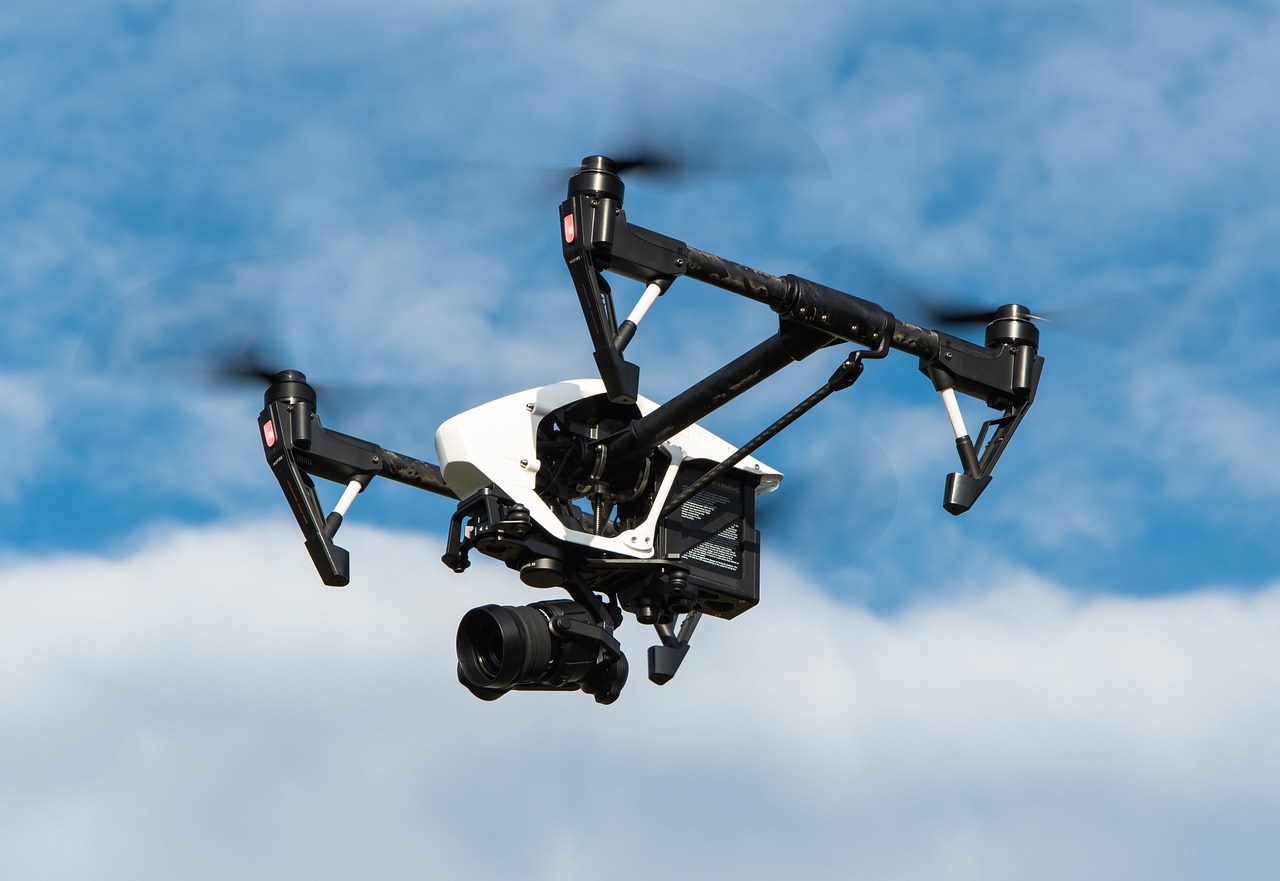
Enhancing Data Integrity
Data integrity is the bedrock of any research endeavor. It ensures that the information gathered, analyzed, and shared remains accurate, consistent, and trustworthy. In an era where data is often manipulated or misrepresented, blockchain technology emerges as a game-changer. By leveraging its decentralized structure, blockchain guarantees that data remains unaltered and verifiable, fostering a climate of trust among researchers and stakeholders alike.
Imagine a world where every piece of data you collect is like a precious gem, and blockchain acts as a secure vault that protects these gems from tampering. Each transaction or data entry is recorded in a way that is both transparent and immutable, meaning that once data is added to the blockchain, it cannot be changed or deleted without a trace. This characteristic is vital for researchers who rely on the accuracy of their findings to advance their fields.
Moreover, the transparency offered by blockchain allows all participants in a research project to verify data integrity independently. This is particularly important in collaborative environments where multiple parties are involved. Researchers can trust that the data they are working with is genuine, as it is backed by a system that records every modification. This mechanism not only enhances the quality of research but also builds a stronger foundation for collaboration.
To further illustrate the importance of data integrity in research, consider the following key points:
- Immutable Records: Each entry on the blockchain is permanent and cannot be altered, ensuring that the original data remains intact.
- Decentralized Verification: Multiple parties can verify the data independently, enhancing trust and reducing the risk of fraud.
- Audit Trails: Blockchain provides a complete history of data changes, allowing researchers to trace back through the data lifecycle.
In addition to these benefits, blockchain's ability to provide real-time updates means that researchers can access the most current data without delays. This immediacy is crucial in fast-paced research environments, where decisions often depend on the latest findings. By ensuring that data integrity is maintained throughout the research process, blockchain not only enhances collaboration but also accelerates innovation.
In summary, enhancing data integrity through blockchain technology is not just a technical upgrade; it is a fundamental shift in how researchers can trust and verify their data. As we continue to explore the potential of blockchain in research, it is clear that maintaining data integrity will be pivotal in fostering collaboration and driving scientific progress.
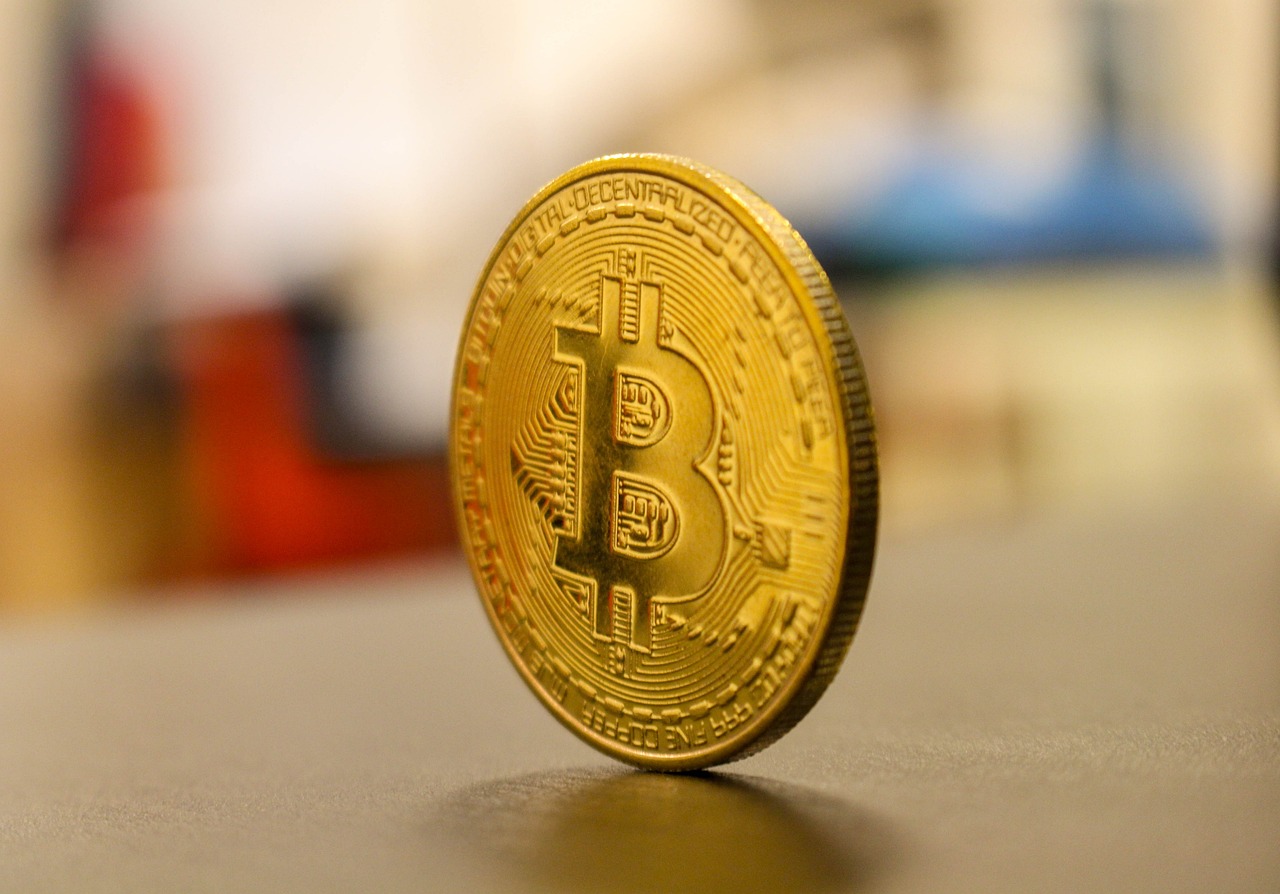
Facilitating Secure Data Sharing
In the realm of research, secure data sharing is not just a luxury; it’s a necessity. Imagine a world where researchers can freely exchange sensitive data without the fear of breaches or misuse. This is where blockchain technology steps in, acting as a digital fortress that safeguards valuable information while promoting collaboration. By leveraging the power of decentralization, blockchain ensures that data is not only shared securely but also remains compliant with various regulations.
One of the standout features of blockchain is its ability to create a transparent and immutable record of transactions. Each time data is shared or modified, a new block is created, linking back to the previous one. This chain of blocks forms a comprehensive history of every interaction, making it incredibly difficult for anyone to alter the data without detection. Consequently, researchers can trust that the information they receive is accurate and untainted. This level of transparency fosters a collaborative spirit, as parties can confidently share findings and insights without the worry of data tampering.
Moreover, blockchain technology employs advanced cryptographic techniques to ensure data privacy. When a researcher shares sensitive information, they can encrypt the data, allowing only authorized individuals to access it. This means that even if the data is intercepted, it remains unreadable to unauthorized viewers. Such measures not only protect the intellectual property of researchers but also comply with stringent data protection regulations, such as GDPR. As a result, researchers can engage in collaborative projects without compromising their valuable data.
To illustrate the impact of blockchain on secure data sharing, consider the following table:
| Aspect | Traditional Methods | Blockchain Approach |
|---|---|---|
| Data Integrity | Vulnerable to tampering | Immutable records ensure accuracy |
| Privacy | Limited control over data access | Encrypted sharing with selective permissions |
| Compliance | Challenging to meet regulations | Built-in compliance with data protection laws |
In addition to these benefits, blockchain facilitates real-time data sharing. Researchers can access and analyze data as it is generated, leading to faster decision-making and innovation. This is particularly crucial in fields like healthcare, where timely access to data can significantly impact patient outcomes. By breaking down silos and enabling immediate access to shared data, blockchain promotes a culture of collaboration that is essential for scientific advancement.
In summary, the facilitation of secure data sharing through blockchain technology not only enhances trust among researchers but also paves the way for innovative collaborations. As this technology continues to evolve, it will undoubtedly reshape the landscape of research, making data sharing safer and more efficient than ever before.
- What is blockchain?
Blockchain is a decentralized digital ledger that records transactions across multiple computers, ensuring data integrity and security.
- How does blockchain ensure data security?
Blockchain uses cryptographic techniques to encrypt data, allowing only authorized users to access it while maintaining a transparent record of all transactions.
- Can blockchain help with regulatory compliance?
Yes, blockchain's inherent features support compliance with various data protection regulations, making it easier for researchers to share data securely.
- What are smart contracts?
Smart contracts are self-executing contracts with the terms of the agreement directly written into code, streamlining processes and reducing administrative burdens.

Smart Contracts in Research Collaboration
Imagine a world where research agreements are executed automatically, without the need for endless paperwork and back-and-forth negotiations. This is the magic of smart contracts in research collaboration. Smart contracts are self-executing contracts with the terms of the agreement directly written into code. They operate on blockchain technology, ensuring that all parties involved can trust the process without needing a middleman. This not only saves time but also significantly reduces the potential for misunderstandings or disputes.
In the realm of research, where collaboration is often key to innovation, smart contracts can streamline various processes. For instance, when multiple researchers from different institutions collaborate on a project, smart contracts can automatically allocate funding based on pre-defined milestones. This means that once a researcher completes a specific task, the contract will trigger a payment, ensuring that everyone is compensated fairly and promptly for their contributions.
Moreover, smart contracts can enhance transparency in research collaborations. By recording all transactions and agreements on a public ledger, all stakeholders can easily verify the progress of the project. This transparency fosters a culture of accountability, as researchers know that their actions are being monitored and recorded. It also allows for easier auditing, which is crucial in fields where compliance with regulations is necessary.
However, the implementation of smart contracts is not without its challenges. For one, researchers need to be educated about how to create and manage these contracts effectively. Additionally, there may be legal implications that vary by jurisdiction, which could complicate the adoption of smart contracts in research settings. Nonetheless, the potential benefits far outweigh these challenges, making it an area worth exploring for research teams looking to enhance their collaborative efforts.
To illustrate the potential of smart contracts in research collaboration, consider the following table that outlines key features and benefits:
| Feature | Benefit |
|---|---|
| Automation | Reduces administrative burdens and accelerates processes. |
| Transparency | Ensures all parties can verify transactions and agreements. |
| Security | Data is securely stored on the blockchain, reducing the risk of tampering. |
| Cost-Effectiveness | Minimizes the need for intermediaries, lowering overall costs. |
In conclusion, smart contracts hold the key to revolutionizing how researchers collaborate. By automating agreements and ensuring transparency, they pave the way for a more efficient and trustworthy research environment. As more researchers begin to explore the possibilities of blockchain technology, the adoption of smart contracts will likely become a standard practice, transforming the landscape of collaborative research.
- What are smart contracts? Smart contracts are self-executing contracts with the terms of the agreement directly written into code, operating on blockchain technology.
- How do smart contracts benefit research collaboration? They automate agreements, enhance transparency, and reduce administrative burdens, making the research process more efficient.
- Are there any challenges in implementing smart contracts? Yes, challenges include the need for education on managing contracts and potential legal implications that vary by jurisdiction.
- Can smart contracts ensure data security? Absolutely! Smart contracts store data securely on the blockchain, significantly reducing the risk of tampering.

Incentivizing Collaboration with Tokens
In the ever-evolving landscape of research, collaboration is not just encouraged; it is essential. However, motivating researchers to engage and contribute can sometimes feel like trying to herd cats. This is where tokenization comes into play, offering a revolutionary way to incentivize collaboration. By leveraging blockchain technology, researchers can create a system where contributions are recognized and rewarded through digital tokens. But how does this work in practice?
Imagine a research project where each participant receives tokens for their contributions—be it data analysis, literature reviews, or even experimental results. These tokens can then be used in various ways, such as:
- Accessing exclusive resources or datasets
- Participating in future projects
- Exchanging for monetary rewards or grants
This model not only fosters a spirit of teamwork but also ensures that every contribution is valued. Researchers are more likely to share their insights and expertise when they know that their efforts will be rewarded. Furthermore, this system encourages transparency, as the blockchain ledger records every transaction, making it easy to track contributions and rewards.
One compelling example of this can be seen in the realm of scientific publications. Traditionally, the process of getting published can be lengthy and fraught with challenges. However, with a token-based approach, researchers could earn tokens for peer reviews or for sharing their data publicly. These tokens could then be redeemed for benefits such as expedited review processes or discounts on publication fees. This not only incentivizes collaboration but also enhances the overall quality of research outputs.
Moreover, token economies can serve as a powerful tool for building a sense of community among researchers. When individuals feel they are part of a collaborative ecosystem that recognizes their contributions, it fosters a culture of innovation and shared success. Researchers are more likely to participate in discussions, share their findings, and engage in interdisciplinary projects, knowing that their efforts will be rewarded.
However, implementing a token-based system is not without its challenges. Researchers must navigate the complexities of token design, ensuring that the system is fair and equitable. Additionally, there needs to be a clear understanding of the value of tokens and how they can be utilized within the research community. Education and awareness about the benefits of tokenization are crucial for widespread adoption.
In conclusion, incentivizing collaboration through tokens is a promising avenue for enhancing engagement in research. By recognizing and rewarding contributions, we can cultivate a collaborative environment where innovation thrives. As more researchers embrace this model, we may very well witness a transformation in how research is conducted, shared, and celebrated.
- What are tokens in research collaboration?
Tokens are digital assets that can be earned by researchers for their contributions to a project, which can then be used for various rewards. - How does tokenization enhance collaboration?
By rewarding contributions, tokenization motivates researchers to engage more actively in collaborative efforts. - Are there any challenges to implementing a token system?
Yes, challenges include ensuring fairness in token distribution and educating researchers about the system's benefits.
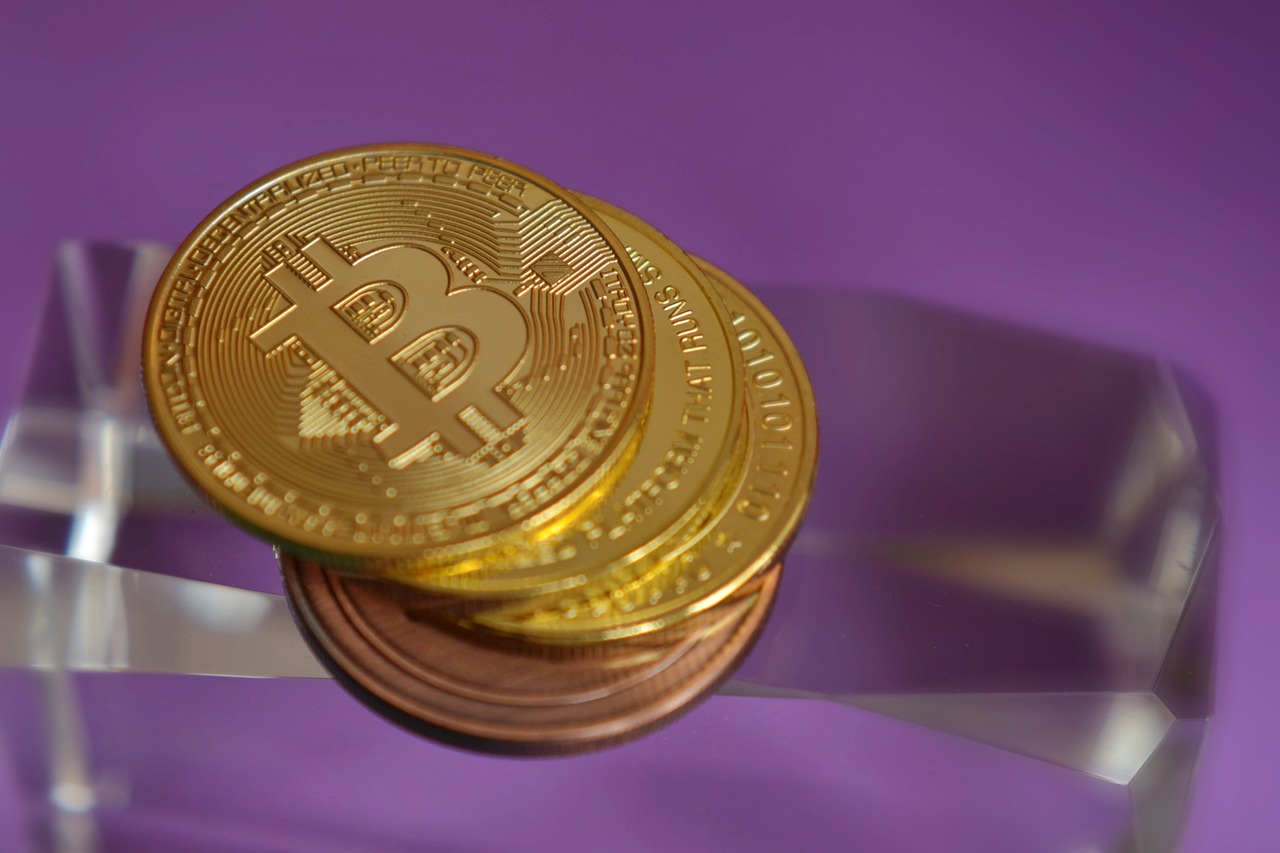
Case Studies of Blockchain in Research
As we delve into the transformative world of blockchain technology, it's essential to highlight real-world applications that showcase its potential in research collaboration. Various research projects across the globe have successfully integrated blockchain to streamline processes, enhance data integrity, and foster collaboration among researchers. These case studies not only illustrate the practical benefits of blockchain but also serve as a beacon for future research initiatives.
One notable example is the initiative by Chronicled, which is focused on the pharmaceutical supply chain. They developed a blockchain-based platform that enables stakeholders to track the provenance of drugs, ensuring their authenticity and compliance with regulatory standards. This platform has significantly improved collaboration among manufacturers, distributors, and healthcare providers, ultimately enhancing patient safety. By integrating smart contracts, Chronicled has automated compliance processes, reducing administrative overhead and the potential for human error.
Another compelling case study comes from the University of Nicosia, which has embraced blockchain technology to facilitate academic research and publishing. The university launched a blockchain-based platform for academic journals, allowing researchers to publish their findings securely while maintaining ownership of their intellectual property. This approach not only promotes transparency but also encourages collaboration among scholars across different disciplines. Researchers can access a decentralized repository of research data, ensuring that their contributions are recognized and verifiable.
In the realm of environmental science, the Climate Ledger Initiative has made significant strides by utilizing blockchain to enhance transparency in carbon credit trading. This initiative connects various stakeholders, including governments, NGOs, and businesses, to create a transparent marketplace for carbon credits. By leveraging blockchain, the initiative ensures that carbon credits are accurately recorded and tracked, fostering trust and collaboration among participants. This collaborative effort has the potential to accelerate global climate action by providing a reliable framework for trading carbon credits.
Furthermore, the Open Science Framework (OSF) is another exemplary case that highlights the role of blockchain in research collaboration. OSF has integrated blockchain technology to create a decentralized platform for researchers to share their projects and data openly. This initiative not only enhances data sharing but also ensures that contributions are attributed correctly, promoting a culture of collaboration and transparency in scientific research. Researchers can securely store their data and findings, making it easier to collaborate with peers while maintaining control over their work.
These case studies demonstrate that blockchain technology is not just a theoretical concept but a practical tool that can revolutionize the way researchers collaborate. By providing a secure, transparent, and efficient framework for sharing data and managing agreements, blockchain addresses many of the challenges faced in traditional research environments. As more institutions and researchers recognize the potential of blockchain, we can expect to see a surge in innovative collaborations that push the boundaries of knowledge and discovery.
In summary, the integration of blockchain in research is paving the way for a new era of collaboration. The success stories from Chronicled, the University of Nicosia, the Climate Ledger Initiative, and the Open Science Framework serve as powerful examples of how blockchain can enhance trust, transparency, and efficiency in research endeavors. As we continue to explore the possibilities of this technology, it becomes increasingly clear that blockchain is set to play a pivotal role in shaping the future of collaborative research.
- What is blockchain technology? Blockchain is a decentralized digital ledger that records transactions across multiple computers, ensuring data integrity and security.
- How does blockchain enhance collaboration in research? By providing transparency, security, and efficient data sharing, blockchain fosters trust among researchers and stakeholders.
- What are smart contracts? Smart contracts are self-executing agreements with the terms of the contract directly written into code, automating processes and reducing administrative burdens.
- Can blockchain ensure data integrity? Yes, blockchain ensures that data remains unaltered and verifiable, which is crucial for building trust in collaborative projects.
- What are some challenges of using blockchain in research? Challenges include scalability issues, regulatory compliance, and the need for widespread adoption among researchers.

Challenges and Limitations
While blockchain technology offers a plethora of benefits for enhancing collaboration in research, it is not without its . Researchers and institutions must navigate a complex landscape of technological, regulatory, and practical hurdles that can hinder the widespread adoption of blockchain solutions. One of the primary challenges is the scalability of blockchain networks. As the number of transactions increases, the speed and efficiency of the network can diminish, leading to delays in data sharing and collaboration. This issue is particularly critical in research environments where timely access to data can significantly impact outcomes.
Another significant limitation is the interoperability of blockchain systems. Different blockchain platforms may not easily communicate with one another, creating silos of information that can obstruct collaboration across various disciplines. Researchers often work with diverse tools and systems, and a lack of standardization can complicate the integration of blockchain into existing workflows. This fragmentation can lead to inefficiencies and reduced trust among research teams.
Moreover, the regulatory landscape surrounding blockchain technology is still evolving. Researchers must contend with varying regulations and compliance requirements across different jurisdictions. This can create uncertainty, particularly regarding data privacy and security. For example, the General Data Protection Regulation (GDPR) in Europe imposes strict guidelines on how personal data is handled, which can clash with the immutable nature of blockchain. Researchers must find a balance between leveraging blockchain's benefits and adhering to these regulations, which can be a daunting task.
In addition to these technical and regulatory challenges, there is also a cultural resistance to adopting new technologies within research communities. Many researchers are accustomed to traditional methods of data sharing and collaboration, and the shift to a decentralized model may be met with skepticism. This resistance can stem from a lack of understanding of blockchain technology and its potential advantages. To overcome this barrier, education and outreach are essential to demonstrate the value of blockchain in enhancing research collaboration.
Lastly, the initial cost of implementation can be a significant deterrent for many research institutions. Developing and integrating blockchain solutions require substantial investment in technology and training. Smaller institutions, in particular, may struggle to allocate the necessary resources to adopt blockchain effectively. This financial burden can stifle innovation and limit the potential benefits that blockchain could bring to collaborative research.
In conclusion, while blockchain technology holds immense promise for transforming research collaboration, it is essential to acknowledge and address these challenges and limitations. By understanding these hurdles, researchers and institutions can better prepare for a future where blockchain plays a pivotal role in enhancing transparency, security, and efficiency in collaborative research efforts.
- What are the main challenges of using blockchain in research?
Some of the main challenges include scalability issues, interoperability between different blockchain systems, regulatory compliance, cultural resistance to new technologies, and the cost of implementation. - How does blockchain improve data integrity in research?
Blockchain ensures data integrity by creating an immutable record of transactions, meaning that once data is entered, it cannot be altered or deleted without consensus from the network. - Can blockchain be used for secure data sharing?
Yes, blockchain allows researchers to share sensitive data securely while maintaining privacy and compliance with regulations, making it an ideal solution for collaborative projects. - What are smart contracts, and how do they benefit research?
Smart contracts are self-executing contracts with the terms directly written into code. They automate agreements between parties, streamlining processes and reducing administrative burdens in research collaboration.

Future Trends in Blockchain and Research
As we peer into the future of blockchain technology in research, it's clear that we stand on the brink of a transformative era. The integration of blockchain into research paradigms promises to not only enhance collaboration but also redefine how data is handled across various disciplines. Imagine a world where researchers can seamlessly share data, ideas, and resources without the shackles of traditional barriers. This is not just a dream; it’s becoming a reality.
One of the most exciting trends is the rise of interoperability between different blockchain networks. As researchers from various fields collaborate, the ability to communicate and share data across distinct blockchain systems will be crucial. This interoperability will facilitate a more cohesive research environment, enabling scientists to pull insights from diverse datasets and collaborate on a global scale.
Moreover, the advent of decentralized autonomous organizations (DAOs) in research is gaining traction. These organizations operate on blockchain technology and allow researchers to propose, fund, and manage projects collectively without centralized control. Imagine a research project where every participant has a voice, and decisions are made transparently and democratically. This could lead to more innovative approaches and solutions, as diverse perspectives come together in a collaborative atmosphere.
Another trend worth noting is the increasing use of artificial intelligence (AI) in conjunction with blockchain. AI can analyze vast amounts of data, and when paired with the transparency and security of blockchain, it can lead to groundbreaking discoveries. For instance, AI algorithms could identify trends and correlations in research data that might be overlooked by human researchers, thus accelerating the pace of innovation.
Tokenization will also play a significant role in the future of research collaboration. Researchers can create unique tokens that represent their contributions to projects. These tokens can serve as rewards, granting access to exclusive datasets or funding for future research endeavors. This system not only incentivizes collaboration but also fosters a culture of shared success and accountability among researchers.
Furthermore, the integration of blockchain in clinical trials is poised to revolutionize medical research. By providing a transparent and immutable record of trial data, blockchain can enhance trust among participants and stakeholders. This transparency can lead to improved patient recruitment and retention, ultimately speeding up the process of bringing new treatments to market.
As we look forward, it's essential to remain aware of the regulatory landscape surrounding blockchain technology. Governments and institutions are beginning to recognize the potential of blockchain in research, but with this recognition comes the need for clear regulations and guidelines. Researchers will need to navigate these regulations to ensure compliance while still reaping the benefits of blockchain.
In conclusion, the future of blockchain in research is bright and full of potential. As we embrace these emerging trends, we can expect to see a more collaborative, efficient, and transparent research environment. The possibilities are endless, and the only limit is our imagination.
- What is blockchain technology? Blockchain is a decentralized digital ledger that records transactions across multiple computers, ensuring data integrity and security.
- How does blockchain enhance collaboration in research? It provides transparency, security, and efficient data sharing, fostering trust among researchers.
- What are smart contracts? Smart contracts are self-executing agreements coded on the blockchain that automate processes in research collaboration.
- Can blockchain ensure data privacy? Yes, blockchain allows for secure data sharing while maintaining compliance with privacy regulations.
- What are DAOs? Decentralized Autonomous Organizations are blockchain-based entities that allow collective management and funding of research projects.

Conclusion: The Future of Collaborative Research
As we stand on the brink of a new era in research collaboration, blockchain technology emerges as a beacon of hope, promising to revolutionize the way researchers connect, share, and innovate. The potential of blockchain is not just a fleeting trend; it's a transformative force that can reshape the landscape of research across various disciplines. By enhancing data integrity, facilitating secure data sharing, and enabling smart contracts, blockchain fosters an environment where trust and transparency reign supreme.
Imagine a world where researchers from different continents can collaborate seamlessly, sharing sensitive data without the fear of tampering or breaches. This is not merely a dream; it is a tangible possibility with the adoption of blockchain. Moreover, the introduction of tokenization can incentivize participation, encouraging researchers to contribute their expertise and resources. This creates a vibrant ecosystem where collaboration flourishes, leading to groundbreaking discoveries and innovations.
However, as we embrace this promising future, we must also acknowledge the challenges that lie ahead. Issues such as scalability, regulatory compliance, and user adoption must be addressed to fully harness the power of blockchain in research. It is essential for stakeholders to work together, navigating these obstacles with a shared vision of a collaborative research landscape that is more efficient and impactful.
In conclusion, the future of collaborative research is bright with the integration of blockchain technology. As we continue to explore its applications and address its limitations, we pave the way for a new chapter in research that values collaboration, security, and innovation. The journey ahead is sure to be exciting, and those who are willing to adapt and embrace these changes will undoubtedly lead the way in shaping the future of research.
- What is blockchain technology?
Blockchain technology is a decentralized digital ledger that records transactions across multiple computers, ensuring data integrity and security.
- How does blockchain enhance data integrity in research?
Blockchain ensures that data remains unaltered and verifiable, fostering trust among researchers and stakeholders in collaborative projects.
- What are smart contracts and how do they benefit research collaboration?
Smart contracts are self-executing contracts that automate agreements between parties, streamlining processes and reducing administrative burdens.
- Can blockchain technology incentivize collaboration?
Yes, through tokenization, researchers can be rewarded for their contributions, motivating participation and enhancing engagement in research initiatives.
- What challenges does blockchain face in research environments?
Challenges include scalability, regulatory compliance, and user adoption, which need to be addressed for successful implementation.
Frequently Asked Questions
-
What is blockchain technology?
Blockchain technology is a decentralized digital ledger that securely records transactions across multiple computers. This ensures that the data is transparent, tamper-proof, and easily verifiable, making it an ideal solution for enhancing collaboration in research.
-
How does blockchain enhance data integrity in research?
Blockchain enhances data integrity by providing a secure framework where data cannot be altered without consensus from all parties involved. This fosters trust among researchers and stakeholders, ensuring that the information shared is accurate and reliable.
-
Can blockchain facilitate secure data sharing?
Absolutely! Blockchain allows researchers to share sensitive data securely while maintaining privacy and compliance with regulations. Its encryption methods protect data from unauthorized access, enabling safe collaboration across various disciplines.
-
What are smart contracts, and how do they work in research?
Smart contracts are self-executing contracts with the terms of the agreement directly written into code. In research, they automate processes and agreements between parties, reducing administrative burdens and streamlining collaboration.
-
How can tokenization incentivize collaboration among researchers?
Tokenization introduces a reward system where researchers can earn tokens for their contributions. This not only motivates participation but also enhances engagement in research initiatives, creating a more collaborative environment.
-
Are there any real-world examples of blockchain in research?
Yes! There are several case studies showcasing successful implementations of blockchain in research. These examples highlight the benefits realized by research teams, such as improved collaboration, enhanced data security, and increased trust among participants.
-
What challenges does blockchain face in research settings?
Despite its potential, blockchain faces challenges like scalability, interoperability, and resistance to change among traditional researchers. These limitations can hinder the widespread adoption of blockchain solutions in collaborative research efforts.
-
What future trends can we expect in blockchain and research?
The future of blockchain in research looks promising! Emerging trends include greater integration of AI with blockchain, the development of more user-friendly platforms, and an increase in collaborative projects utilizing token economies to enhance participation.







